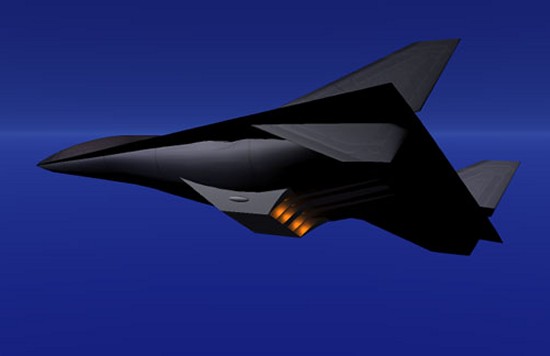|
||||||||||
|
|
||||||||||
|
||||||||||
|
|
||||||||||

To better understand how aircraft are designed to fly at high Mach numbers, we need to know a little about the flow properties at these speeds. In a previous question on supercritical airfoils, we discussed the subsonic, transonic, and supersonic regimes of flight. Yet another regime is called hypersonic flight. Though typically said to begin at about Mach 5, this is only a rule of thumb and indicates the approximate speed at which flow phenomena of little importance at low supersonic numbers begin to become more significant.
One of the most significant of these phenomoena is aerodynamic heating. Any body traveling through any fluid (air is a fluid of very low density) experiences friction, or the impact of particles of the fluid on the body. As Mach number increases, these collisions become more frequent and energetic. As a result, part of the kinetic energy of those collisions is converted into thermal energy, or heat.
Heating is a difficult problem because it can weaken the materials the body is made from leading to structural failure. Space capsules like the Mercury or Apollo overcame this problem using thick heat shields made from ablative materials. These shields are designed to absorb the heat and break off carrying that heat away. The Space Shuttle uses more advanced heat tiles that can absorb tremendous amounts of heat, but these are expensive to apply and maintain. Another possible solution is to circulate a cold liquid or gas through the aircraft and along the surfaces most susceptible to heating (the nose and wing leading edges, for example). The liquid acts as a heat sink absorbing some of that thermal energy. One possible fluid to use is the vehicle's own fuel since hypersonic vehicles will likely be fueled by liquid hydrogen or some other cryogenically-cooled liquid. However, this approach is also complicated, expensive, and requires careful fuel management to avoid stability problems.
Assuming we can develop materials to withstand these high temperatures or techniques to minimize their influence, the key to hypersonic flight is developing practical engines that can fly at these speeds. Surprisingly, the kinds of engines best suited to flight under these conditions are deceptively simple. The engines on most jet aircraft we fly are called turbojets ot turbofans. What these engines must do to generate thrust is compress the air coming into the engine so that fuel can be injected and the mixture burned. At subsonic speeds, the air is simply not compressed enough for combustion to occur, so a series of rotating blades is needed to provide that compression. At supersonic speeds, however, the air is already sufficiently compressed merely by being "rammed" into the engine at high speed. This kind of engine, basically a tube with a fuel injector in the middle, is called a ramjet (for ram-air compression). Not only is the ramjet much simpler than the turbojet, but it becomes more fuel efficient than the turbojet at about Mach 3.
By Mach 4 or 5, however, the efficiency of the ramjet suffers because the engine can't suck the air in fast enough and slow it to subsonic speed for combustion to occur. The excess air flow spills out around the engine inlet creating enormous drag. Instead, a new type of engine in which combustion occurs at supersonic speeds is needed. This kind of engine is called the scramjet (for supersonic combusting ramjet). NASA's X-43 Hyper-X program will soon test fly a scramjet engine at speeds possibly as high as Mach 10. The problem with both ramjets and scramjets is that they must already be in motion to work. When at rest, there is no compressed air being forced into them so they can generate no thrust. Thus, these engines have not found much use in aircraft, although ramjets are commonly used in missiles since they are often boosted to high speeds by rockets.
To get around this problem, some have proposed developing "hybrid" engines with rotating blades (like in the turbojet) for operations at low speed that are retracted to create a ramjet at high speeds. By varying the nozzle geometry to change the pressure within the engine, a ramjet can also be converted into a scramjet at even higher speeds. Recent research at NASA has focused on this type of dual ramjet-scramjet engine. Yet another approach is the pulse-detonation engine (PDE) that produces thrust through repeated detonations. The theory goes that an amount of fuel is injected into the engine and ignited to produce a momentary surge forward. This process is repeated at some low frequency to generate a continuous thrust. Aside from some well-publicized sightings of the "donuts-on-a-rope" contrails, little evidence has emerged to suggest that anything more than basic research has been conducted into developing or using the PDE.
For more information on these subjects, try the following sites.
Read More Articles:


|
Aircraft | Design | Ask Us | Shop | Search |

|
|
| About Us | Contact Us | Copyright © 1997-2023 | |||
|
|
|||